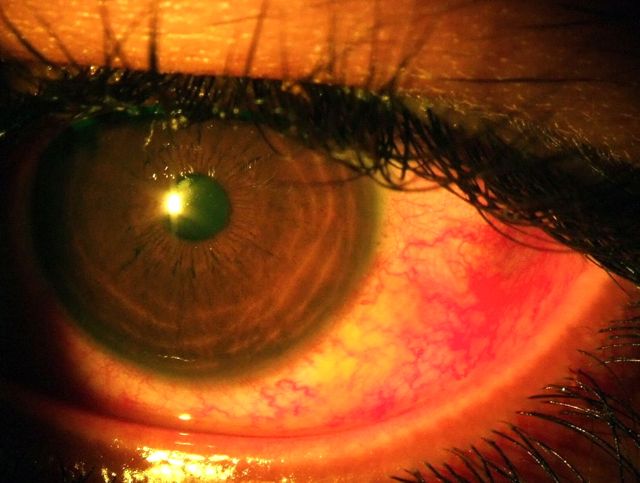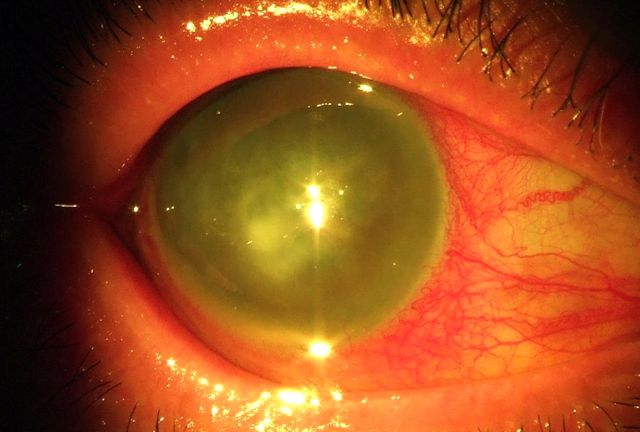†
†
†

†
†
†
†
†
†
†
†
†
†
†

†
†
†
Petaling Jaya, Klang, Sunway, Puchong, Subang Jaya, Kelang, Klang, Damansara, Bangsar, Mid Valley, Sri Hartamas, Shah Alam
†
†
†
†
†
†
ACS Eye Specialist Centre
95G & 97G Jalan TKS 1,
Taman Kajang Sentral,
43000 Kajang,
Selangor, Malaysia.
Tel: 03-82116078
The Red Eye
What commonly is termed "red eye" is also often referred to as sore eye, pink eye, eye pain, or eye infection. There are many different eye diseases that have these common symptoms and these different eye diseases each have a different treatment.
Some of the eye diseases are as below:
Conjunctivitis
There are actually many different types of conjunctivitis e.g. infective (viral and bacterial), allergic, toxic, mechanical, phlyctenular, keratoconjunctivitis sicca (severe dry eyes), blepharitis, superior limbic keratoconjunctivitis and the list can go on and on.
The danger of self medication is that you may not be putting the correct eye drops and thus prolonging the condition. Some types may required the use of topical antibiotics, other kinds of conjunctivitis may require steroids. Using the wrong type of medication can make the disease worse and at times even cause blindness.
A common side-effect of using steroids without an eye doctor's supervision is getting the eye disease of glaucoma and going blind if left undetected.
Seek an ophthalmologist opinion first for a correct diagnosis to save yourself further grief along the way.
Uveitis
The eye can experience inflammation due to various reasons. Uveitis may cause a persistent red, painful eye and can result in blindness if not treated properly. Systemic medication is also required in some instances if eye drops fail to treat completely.
Subconjunctival hemorrhage
Vessels on the surface of the eye can rupture and cause bleeding. There may be underlying factors that make an individual more prone to this, so discuss with your ophthalmologist to see whether there are any precipitating factors that you can avoid.
Angle closure glaucoma
This condition presents as a painful, red eye with blurring of vision. This eye disease requires emergency treatment. If not treated, this results in permanent blindness. Most cases require immediate medical and surgical intervention, which when done urgently can save your vision. Trying over the counter medication is a definite no-no for angle closure glaucoma. This eye disease requires specific prescription medication followed by laser treatment or surgery to save the eyesight. Contact your ophthalmologist for immediate treatment.
Pterygium/Pingecula
These are growths on the surface of the eye, where the surrouding area is supplied by prominent blood vessels resulting in redness around that region. Seek your eye doctorís opinion as to whether your pterygium or pingecula needs removal before it obstructs your vision.
Corneal ulcer
This is serious condition that can present with red eyes. Contact lens wearers are more vulnerable to this condition as well as those exposed to contaminated water/solutions in their eye. Patients can experience visual loss due to permanent scarring on the cornea. Early treatment is necessary in this condition. Please seek an eye specialistís consultation immediately regarding this dangerous corneal infection before permanent and irreversible damage is done.
Endophthalmitis
There are some conditions in which the whole eyeball can get infected e.g. post surgery or immunocompromised patients.
Therefore itís important for patients who have undergone eye surgery in the past to still come for regular check ups as endophthalmitis can present days/months/years after surgery.
Immunocompromised patients, diabetics, patients with multiple diseases can develop endophthalmitis even if they did not undergo eye surgery. Spread of the infection from other parts of the body to the eye has been known to occur and unfortunately this can result in blindness to the eye.
Self-medication of eye drops
Some people use eye drops that make their "red eyes" look white and fresh. Constant use of one of the widely available "get the red out" eye drops can cause dilation of the eyes' blood vessels. After the effect of the eye drop wears off, the blood vessels sometimes dilate larger, causing the eyes to appear even more bloodshot. Some of these eye drops have components in them that can cause damage in the long term.
†